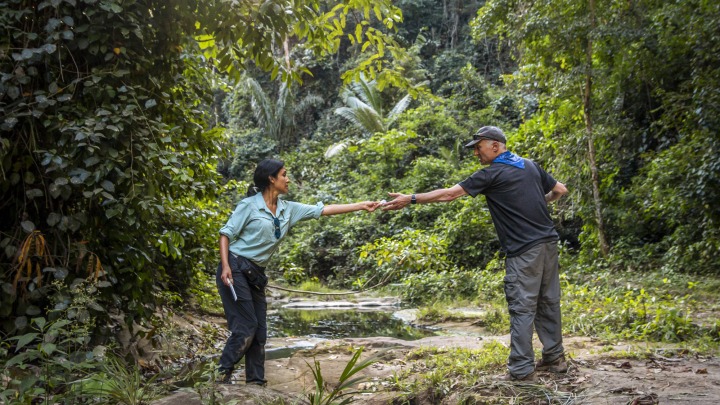
Magnifying the MicroAmazon: Searching for potential new medicines where biodiversity boils over
It’s 8:00 a.m., and the field thermometer already reads 98° F. And that temperature does not account for the steam rising around Rosa Vásquez as she crouches over the river to collect her next sample.
On this early-August morning in the Peruvian Amazon rainforest, Vásquez scrapes lichen off rocks and gathers cyanobacteria from the mud beneath the water, looking for genetic clues that explain how microorganisms can endure this environment — how they have evolved to survive in a river so hot, it boils.
Vásquez, a researcher in the Sherman lab at the Life Sciences Institute, hopes to identify the physiological processes that shield these organisms from their extreme environment — and, ultimately, understand how the protective natural products they generate might be harnessed as potential new medicines.



